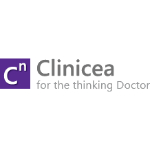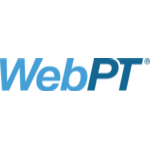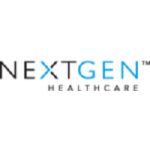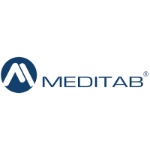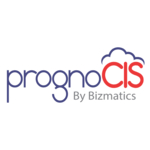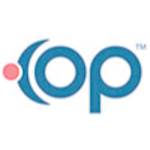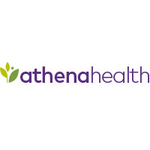List of Best Pediatric Software
Showing 10 of 18 productsHalemind, the innovative software designed to enhance your mind and optimize your performance. With its advanced features and user-friendly interface, Halemind is a tool for boosting your cognitive abilities and achieving your goals. Say hello to a s...Read Halemind Reviews
Clinicea, a revolutionary software designed to streamline and enhance the management of healthcare practices. With its advanced features and user-friendly interface, Clinicea allows for effortless appointment scheduling, patient record management, an...Read Clinicea Reviews
WebPT is a trusted and innovative software designed specifically for physical therapists, occupational therapists, and speech language pathologists. This powerful platform streamlines workflows and documentation, allowing therapy professionals to foc...Read WebPT Reviews
NextGen is a future of technology and innovation. This revolutionary software is transforming the way businesses operate and changing the landscape of industries. With its advanced capabilities and user-friendly interface, NextGen is paving the way f...Read NextGen Reviews
Meditab is a software for healthcare professionals. With user-friendly features and streamlined processes, Meditab makes managing patient data, appointments, and financials a breeze. Say goodbye to cumbersome paperwork and hello to a more efficient a...Read Meditab Reviews
PrognoCIS EMR PrognoCIS EMR is a electronic medical records software designed to streamline and optimize healthcare practices. With its user-friendly interface features, PrognoCIS EMR provides healthcare professionals with a comprehensive is a soluti...Read PrognoCIS EMR Reviews
Pediatric Therapy EMR is a solution for streamlining the medical records and patient management process for pediatric therapists. Designed with the specific needs of pediatric therapy practices in mind, this EMR offers an efficient and user-friendly...Read Pediatric Therapy EMR Reviews
Office Practicum the ultimate software for healthcare professionals. It streamlines and simplifies the day-to-day operations of medical practices, making administrative tasks more efficient and ensuring impeccable patient care. With its user-friendly...Read Office Practicum Reviews
CureMD is a modern, cloud-based electronic health record software that aims to simplify and enhance the healthcare experience. With its intuitive interface features, CureMD streamlines administrative tasks, improves communication between providers an...Read CureMD Reviews
Athenahealth is the game-changing software that is transforming the healthcare industry. With its innovative tools and superior technology, athenahealth is streamlining and improving the way medical professionals provide care to their patients. Disco...Read athenahealth Reviews
- What Is Pediatric Software?
- Top Reasons Why Businesses Need Pediatric Software?
- What Are the Top Key Features of Pediatric Software?
- What Are the Top Benefits of Pediatric Software?
- What Are the Steps to Choose the Right Pediatric Software?
- What Are the Types of Pediatric Software for Different Industries?
- What Are the Technology Trends for Best Pediatric Software?
- What Are the Deployment Options for Pediatric Software?
What Is Pediatric Software?
Pediatric software refers to software that has been specifically developed for utilization inside a healthcare environment catering to pediatric patients. This tool is utilized to aid physicians and other healthcare practitioners in evaluating and delivering medical attention to their pediatric patients.
The best pediatric software encompasses several functionalities, including the management of medical data, patient administration, diagnostic and tracking capabilities, prescription management, and additional functions.
This software has the potential to enhance the organizational and operational efficiency of medical personnel, concurrently improving the precision of patient diagnosis and treatments. Furthermore, it has the potential to enhance overall communication among pediatric healthcare practitioners, patients, and their family members.
Top pediatric software facilitates enhanced medical care for pediatric patients by granting practitioners increased accessibility to precise patient data, hence expediting diagnosis and optimizing treatment outcomes.
Top Reasons Why Businesses Need Pediatric Software?
Top Reasons Why Businesses Need Pediatric Software:
1. Improved record keeping: Pediatrics software facilitates the generation of precise and effectively structured patient records, hence enabling convenient retrieval of crucial medical information.
2. Streamlined scheduling: The utilization of pediatrics software facilitates the optimization of appointment scheduling, expedites the check-in process, and minimizes patient waiting periods.
3. Enhanced patient engagement: The best pediatric software facilitates enhanced communication between medical practices and patients, enabling the transmission of appointment reminders by text messages or emails, as well as granting patients the ability to receive pertinent information from their healthcare providers.
4. Improved billing process: The utilization of software for pediatricians facilitates the generation of detailed invoices, reduces the duration required for payment processing, and enhances the effectiveness of charge monitoring within medical practices.
5. Enhanced security: The top pediatric software has a comprehensive range of security features that are designed to safeguard sensitive medical information and patient records.
6. Automated data collection: The implementation of pediatrics software facilitates the automated gathering of data, streamlining the process of data entry and allowing medical personnel to allocate additional time to patient care.
7. Disease surveillance and monitoring: The utilization of pediatrics software enables the real-time monitoring of illness trends, hence facilitating enhanced accessibility to healthcare services and the development of more effective treatment strategies for patients.
8. Improved collaboration: The utilization of the best pediatric software facilitates efficient collaboration among physicians, enabling seamless sharing of patient records and updates.
9. Prevention and care plan tracking: The utilization of pediatrics software allows for the efficient monitoring of preventive measures, patient objectives, and treatment plans, so enabling healthcare organizations to assess the effectiveness of each intervention.
10. Automated lab results integration: The utilization of top pediatric software facilitates the seamless integration and effective administration of laboratory outcomes, hence enhancing the ability of healthcare practitioners to diligently monitor the well-being of their patients with more precision.
11. Increased patient satisfaction: The utilization of top pediatric software within healthcare organizations facilitates the delivery of enhanced patient care, hence resulting in heightened levels of patient satisfaction.
12. Holistic patient view: The utilization of pediatrics software provides doctors with a comprehensive perspective of the patient, facilitating prompt and precise decision-making.
13. Patient portal integration: Pediatrics software facilitates the integration of patient portals, enabling patients to securely access their encrypted medical records through internet platforms.
14. In-depth analytics: The utilization of software for pediatricians facilitates a comprehensive evaluation of the operational effectiveness of a medical practice, hence optimizing productivity and enhancing the overall well-being of patients.
15. Web-based access: The utilization of top pediatric software enables the provision of remote patient visits, as it can be accessible from any location with an internet connection.
What Are the Top Key Features of Pediatric Software?
The top key features of pediatric software include:
1. Recurring Appointments: This functionality facilitates the scheduling of routine meetings with minors, specifically children and adolescents, in order to consistently monitor and assess their overall well-being across a specified period.
2. Patient-Specific Treatment Plans: Healthcare providers have the ability to record precise diagnoses and individualized treatment strategies for each patient, thereby obtaining a thorough understanding of the patient's healthcare requirements.
3. Electronic Prescriptions: This functionality facilitates the expedient and effortless generation of prescriptions, hence optimizing time management and guaranteeing the precision of data.
4. Personalized Video Visits: This technology enables remote physician consultations through video conferencing, so facilitating the scheduling process and minimizing disruptions for parents.
5. Electronic Health Records: This practice guarantees that pediatricians have convenient access to precise and current medical records pertaining to every individual patient.
6. Complex Procedure Documentation: Software for pediatricians functionality facilitates the efficient documentation of intricate medical procedures, including but not limited to the administration of several tests or treatments, by physicians.
7. Parent Portal: This facilitates the secure exchange of medical test results among physicians and enables the provision of comprehensive health education to parents regarding their child's healthcare requirements.
8. e-Learning Resources: This functionality facilitates the ability of paramedical personnel to avail themselves of professional educational programs focused on pediatric care, thereby equipping them with the necessary knowledge to enhance the quality of care provided to their patients.
9. Benchmarking and Reporting: This particular functionality offers medical practitioners significant data pertaining to diagnosis, treatments, and prescribing patterns, enabling them to make well-informed decisions.
10. Immunization Data Management: This functionality enables medical practitioners to conveniently monitor and revise immunization records for individual patients.
What Are the Top Benefits of Pediatric Software?
1. Improved clinical outcomes: Pediatric software facilitates expedited and precise diagnosis and treatment of children, hence resulting in enhanced clinical outcomes.
2. Improved communication: Pediatric software optimizes communication between healthcare practitioners and parents by effectively utilizing patient information.
3. Improved patient compliance: The utilization of pediatric software facilitates the efficient monitoring of treatments, drugs, and subsequent visits, hence enhancing patient adherence.
4. Lower costs: The reduction of clinical time contributes to cost reduction, hence leading to decreasing ratios of patient-to-staff and patient-to-physician.
5. Enhanced safety: The utilization of pediatric software has been shown to effectively mitigate the occurrence of medical errors, hence bolstering the overall safety of patients.
6. Improved care coordination: The enhancement of care coordination and communication is facilitated by the interoperability of healthcare systems.
7. Detection of changes in patient condition: The best pediatric software facilitates the prompt identification of alterations in the health status of patients, enabling healthcare professionals to promptly administer interventions aimed at preventing and managing disorders.
What Are the Steps to Choose the Right Pediatric Software?
1. Identify what specific features you require: In order to make an informed decision regarding the selection of pediatric software, it is necessary to ascertain the requisite features. It is advisable to take into account the distinct requirements associated with the various categories of patients and services that will be rendered.
Additionally, it is important to take into account both present and prospective future requirements.
2. Research available software: Utilize online resources or alternative references to procure a comprehensive inventory of pediatric software items that align with your specific requirements.
The features to be considered encompass Clinical Decision Support (CDS) systems, Electronic Health Records (EHRs), ePrescribing, reporting functionalities, patient reminders, and support services.
3. Narrow down the list to the best match: Once an extensive research of the available software has been conducted, it is advisable to refine the list by selecting the most suitable option that aligns with one's specific requirements. In addition, it is imperative to take into account the financial implications, training prerequisites, and level of customer assistance.
4. Test the software: Prior to making a purchase, it is advisable to conduct a thorough evaluation of the program in order to ascertain its suitability for meeting your specific requirements and compatibility with your current systems.
5. Purchase the software: Once the best pediatric software aligns with your specified criteria, it is advisable to proceed with the acquisition of the product. It is imperative to verify with the seller that the software encompasses the necessary capabilities and meets the support and training requirements.
What Are the Types of Pediatric Software for Different Industries?
1. Hospital Software: The aforementioned software facilitates the management of patient databases and health records within hospital settings, while also enabling the tracking of test results and other pertinent medical information.
Additionally, it has the capability to monitor and handle various aspects of practice management activities, such as scheduling appointments and handling invoicing processes.
2. Clinical Trial Software: The aforementioned software serves as a valuable tool in the facilitation of clinical trials, offering researchers a range of data-gathering instruments, ensuring patient safety through monitoring, and effectively organizing data for further analysis.
3. Telehealth Software: The best pediatric software facilitates remote access to healthcare services for patients, enabling them to engage in communication with their healthcare providers and team through secure means such as video conferencing or other techniques.
4. Private Practice Management Software: The aforementioned software facilitates the scheduling of patient appointments, the management of patient records, and the processing of payments inside private clinics.
5. Home Care Management Software: The aforementioned software facilitates the coordination and monitoring of patient care, as well as the management of patient visits and medicines, for home healthcare practitioners.
What Are the Technology Trends for Best Pediatric Software?
The prominent technological advancements in pediatric software encompass various areas such as cloud-based solutions, intelligent user interfaces, greater accuracy and precision, interoperability of patient data, strengthened data protection measures, mobile apps, natural language processing, and analytics driven by artificial intelligence.
The utilization of cloud-based solutions has significantly enhanced the accessibility of pediatrics software. This is mostly attributed to the capability of cloud hosting, which enables users to conveniently access their data from various devices.
Moreover, the utilization of sophisticated interfaces driven by artificial intelligence has resulted in enhanced levels of precision and productivity, all the while facilitating customized data input encounters.
Patient data interoperability refers to the capability of exchanging patient information among various healthcare settings, hence enhancing the seamless flow of data during the process of diagnosing or treating a patient. This intervention contributes to the enhancement of patient care and the promotion of continuity of treatment.
Furthermore, the implementation of enhanced data protection methods serves to mitigate potential privacy and security vulnerabilities. Additionally, the utilization of mobile applications facilitates convenient access to the software for both parents and clinicians, allowing them to utilize their personal devices for this purpose.
Natural language processing (NLP) facilitates the automation of specific processes, such as the input and interpretation of patient data. Artificial intelligence (AI)-based analytics have emerged as a valuable tool for enhancing the monitoring of patient data and facilitating the development of individualized care plans.
What Are the Deployment Options for Pediatric Software?
There are several options for deploying pediatric software.
1. On-Premise Deployment: This alternative entails the acquisition of both the software and the requisite hardware for its operation. The responsibility of maintaining the hardware and software, as well as guaranteeing the application of any essential upgrades, lies with the supplier.
2. Cloud-Based Deployment: This approach entails leveraging server infrastructure from a third-party provider, such as Amazon Web Services or Microsoft Azure, for the purpose of hosting the program.
The supplier assumes exclusive responsibility for the program, but the server hardware and maintenance tasks are delegated to the external provider responsible for hosting the software.
3. Software as a Service (SaaS): This alternative is the utilization of web-based software that operates on a subscription model, allowing access from any internet-connected device.
The service recipient is responsible for remitting a recurring monthly payment in exchange for access to this service, so enabling them to only concentrate on the management and operation of the program.
4. Mobile App Deployment: This approach entails the development of a mobile application specifically designed for pediatric use, which would be made available for download on various suitable devices. Due to the platform-specific nature of mobile apps, it may be necessary to develop many versions in order to assure compatibility.

